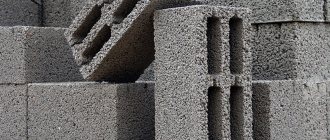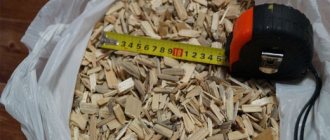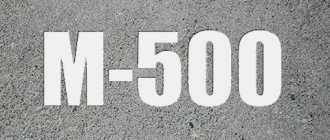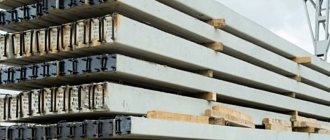- 1 Purpose
- 2 Types
- 3 Sodium and calcium chloride in concrete
- 4 Advantages and disadvantages of use
- 5 How to add it to the solution correctly?
- 6 Conclusion
To make concrete durable in winter, an anti-frost additive is used. Often these are salts of calcium chloride, sodium chloride, sodium nitrate, which enable concrete to slowly harden at sub-zero temperatures. Salts reduce the freezing point of the liquid in the solution, which shortens the setting period, and, therefore, reduces the amount of cement consumed and financial costs. But a large volume of salt introduced into concrete leads to deterioration of the structure and shortens its service life. If you operate a concrete structure at high humidity, there is a risk of damage to the reinforcement from exposure to chloride salts. Therefore, antifreeze additives should not be used in critical reinforced concrete structures.
Purpose
Applying antifreeze additives involves a simple technological process that can be easily done with your own hands. An anti-frost additive is intended to maintain the required mobility of the solution, accelerate the hardening of the mixture and accelerate the hydration of the concrete composition. The use of antifreeze admixtures saves the cost of additional heating equipment and payment for central heat supply to the room in the winter season. Thanks to antifreeze additives for concrete, the ability to operate buildings and structures is accelerated, as well as the consumption of impurities in the solution is reduced and energy is saved.
Return to contents
Effect of salt on functional properties of collagen protein
Tunieva EK, Afanasyeva Yu.I. Gorbatov Research Center for Food Systems Key words: collagen, water-holding capacity, sodium chloride, gel Summary: Collagen proteins have wide application in the meat industry due to their high functional properties. However, taking into account the multicomponent nature of meat products and possible interactions of their ingredients, the effect of sodium chloride on the formation of functional characteristics (water-holding capacity, emulsifying capacity, shear stress) of pork collagen protein was studied. The synergistic effect of salt on the properties of collagen protein was established, which was especially noted after the thermal treatment of the gel. The addition of 1.0% sodium chloride increased the water-holding capacity after heat treatment by 47.8% and the gel strength by 12%. At the same time, a further increase in the salt dosage did not lead to significant changes in the characteristics of the heat-treated gel.
LIST OF REFERENCES / REFERENCES:
1. Huo, J. Study on enzymatic hydrolysis of Gadus morrhua skin and collagen molecular weight distribution of hydrolysates / J. Huo, Z. Zhao // Agricultural Sciences in China.
– 2009. – V. 8 (6). – P. 723-729. DOI:10.1016/S1671-2927(08)60271-0. 2. Matmaroh, K. Characteristics of acid soluble collagen and pepsin soluble collagen from scale of spotted golden goatfish (Parupeneus heptacanthus) / K. Matmaroh, S. Benjakul, T. Prodpan, AB Encarnacion, H. Kishimura // Food Chemistry. – 2011. – V. 129. – P. 1179-1186. DOI: 10.1016/j.foodchem.2011.05.099.
3. Fisinin, V.I. Deep processing of secondary poultry products for different uses / V.I. Fisinin, D.Yu. Ismailova, V.G. Volik, V.S. Lukashenko, I.P. Saleeva // Agricultural biology. – 2022. – T. 52. – No. 6, – P. 1105-1115. DOI: 10.15389/agrobiology.2017.6.1105rus.
Fisinin, VI Pererabotka vtorichnyh produktov pticevodstva dlya raznyh napravlenij ispol'zovaniya / VI Fisinin, D.Yu. Ismailova, VG Volik, VS Lukashenko, IP Saleeva // Sel'skokhozyaistvennaya biologiya. – 2022. – T. 52. – No. 6. – P. 1105-1115. DOI: 10.15389/agrobiology.2017.6.1105rus.
4. Busche, S. Collagen based functional proteins / S. Busche // Fleischwirtschaft international. – 2011. – V. 3. – P. 48-49.
5. Omarov, R.S. Proteins of animal origin in the production of meat products / R.S. Omarov, O.V. Sycheva, S.N. Shlykov // Meat technologies. – 2011. – No. 3. – P. 36-38.
Omarov, RS Belki zhivotnogo proiskhozhdeniya v proizvodstve myasoproduktov [Animal's proteins in the production of meat products] / RS Omarov, OV Sycheva, SN SHlykov // Myasnye tekhnologii. – 2011. – No. 3. – P. 36-38.
6. Semenova, A.A. On the influence of food additives and ingredients on the structural and mechanical properties of carrageenan gels / A.A. Semenova, M.V. Trifonov // Problems of creating healthy food products. Science and technology. – Collection of materials from the XII All-Russian Scientific and Practical Conference. – Uglich, 2006. – P. 227.
Semenova, AA O vliyanii pishchevyh dobavok i ingredientov na strukturno-mekhanicheskie svojstva gelej karraginanov / AA Semenova, MV Trifonov // Problemy sozdaniya produktov zdorovogo pitaniya. Science and technology. – Sbornik materialov XII Vserossijskoj scientific-prakticheskoj konferencii. – Uglich, 2006. – P. 227.
7. Semenova, A.A. Optimization of recipes for meat products containing carrageenans / A.A. Semenova, M.V. Trifonov // Meat industry. – 2007. – No. 5. – P. 29-31.
Semenova, AA Optimizaciya receptur myasnyh produktov, soderzhashchih karraginany / AA Semenova, MV Trifonov // Myasnaya industriya. – 2007. – No. 5. – R. 29-31.
8. Sow, L. Effects of salt and sugar addition on the physicochemical properties and nanostructure of fish gelatin / L. Sow, H. Yang // Food Hydrocolloids. – 2015. – V. 45. – P. 72-82. DOI: 10.1016/j.foodhyd.2014.10.021.
9. Choi, S.-S. Physicochemical and Sensory Characteristics of Fish Gelatin / S.-S. Choi, JM Regenstein // Journal of food science. – 2000. – V. 65 (2). – P. 194-199. DOI:10.1111/j.1365-2621.2000.tb15978.x.
10. Mikhailov, A.N. Chemistry and physics of skin collagen. – M., 1980. – pp. 166–183.
Mihajlov AN Himiya i fizika kollagena kozhnogo pokrova [The chemistry and physics of skin collagen]. – M., 1980. – R. 166–183.
11. Duan, L. Effects of NaCl on the rheological behavior of collagen solution / L. Duan, J. Li, C. Li, G. Li // Korea-Australia Rheology Journal. – 2012. – V. 25 (3). – P. 137-144. DOI: 10.1007/s13367-013-0014-9.
12. Graziano, G. 2010, Hydrophobic interaction of two large plates: An analysis of salting – in/salting – out effects / G. Graziano // Chemical Physics Letters. – 2010. – V. 491. – P. 54-58. DOI: 10.1016/j.cplett.2010.03.092.
13. Dominy, BN The Effects of Ionic Strength on Protein Stability: The Cold Shock Protein Family / BN Dominy, D. Perl, FX Schmid, CL Brooks // Journal of Molecular Biology. – 2002. – V. 319 (2). – P. 541-554. DOI: 10.1016/S0022-2836(02)00259-0.
14. Penkova, RK Thermal stability of calf skin collagen type I in salt solutions / RK Penkova, R. Koynova, G. Kostov, BG Tenchov // Biochimica et Biophysica Acta. – 1996. – V. 1297. – P. 171-181. DOI: 10.1016/S0167-4838(96)00092-1.
15. Brown, EM Influence of neutral salts on the hydrothermal stability of acid – soluble collagen / EM Brown, HM Farrell, RJ Wildermuth // Journal of Protein Chemistry. – 2000. – V. 19. – P. 85-92. DOI: 10.1023/A:1007074314686.
16. Drozdova, N.A. The influence of various food additives and ingredients on the technological characteristics of animal proteins / N.A. Drozdova, V.V. Nasonova // Theory and practice of meat processing. – 2016. – T. 1. – No. 3. – P. 48-56. DOI: 10.21323/2414-438X-2016-1-3-48-56.
Drozdova, NA Influence of different food additives and ingredients on the technological characteristics of animal proteins / NA Drozdova, VV Nasonova // Theory and practice of meat processing. – 2016. – T. 1. – V. 3. – R. 48-56. DOI: 10.21323/2414-438X-2016-1-3-48-56.
Contacts:
Tunieva Elena Karlenovna +7 [email protected] Afanasyeva Yulia Igorevna +7 [email protected]
For quotation:
Tunieva, E.K. The influence of salt on the functional and technological properties of connective tissue protein / E.K. Tunieva, Yu.I. Afanasyeva // All about meat. – 2022. – No. 3. – P. 3-5. DOI: 10.21323/2071-2499-2021-3-3-5.
Kinds
Impurities that allow concrete to maintain its strength characteristics and improve the indoor microclimate during the cold season are divided into the following types:
- Impurities that, by lowering the freezing temperatures of the working mixture, act as a barrier to the crystallization process of water present in the concrete composition. Such additives are called cement mixture hardening retarders or weak hardening accelerators. The process of reducing temperatures is carried out by electrolytes, which are strong and weak.
- Antifreeze additives in the concrete composition accelerate the hardening of the solution and have considerable antifreeze properties.
Return to contents
Sodium and calcium chloride in concrete
Antifreeze additive in concrete sodium chloride.
Sodium chloride or ordinary construction salt has many advantages, due to which the popularity of this composition increases. Used in construction as an anti-frost component during sub-zero temperatures. Allows you to reduce the crystallization temperature of water.
Calcium chloride is used as an accelerator for the hardening of concrete mortar, as well as to increase its strength and resistance to variable weather conditions. By accelerating the setting process of concrete, the time for installation of cement-based structures is reduced. The use of an anti-frost additive in concrete allows construction to continue during the cold season.
Return to contents
Antifreeze additives
Monolithic structures created in warm weather, after drying, are durable and high-quality structures.
Note! The greater strength of reinforced concrete products means that if it is necessary to create a hole in a given structure or shorten it, it is necessary to use methods such as cutting reinforced concrete with diamond wheels and diamond drilling of holes in concrete.
But in order to ensure the same level of strength for cement structures created in winter, it is necessary to use measures that allow water to be retained in the building mass in a liquid state.
Antifreeze additives, which are also called concrete setting and hardening accelerators, can help in this matter. They make it possible to reduce the freezing point of the liquid, thereby helping to normalize the hardening process of the cement monolith structure.
Advantages and disadvantages of use
Antifreeze additives based on sodium chloride have the following advantages:
- due to the salt introduced into the cement mixture, the crystallization temperature of the liquid is reduced, which prevents the destruction of structures and the formation of recesses in monolithic buildings, which lead to pouring in the winter season;
- low cost of the additive;
- technical salt in the solution does not affect the rate of crystallization of the solution, thereby allowing the mixture to be prepared long before its use;
- availability of antifreeze additive;
- the ability to prepare and apply it yourself;
- technical salt in concrete increases the movement of mixture particles, which simplifies the placement and formation of the mass.
Salt in concrete mortar causes reinforcement to rust.
Disadvantages include:
- The possibility of corrosion formation on metal reinforcement, which is laid in concrete mortar to add strength to the structure. Thus, the strength of reinforced concrete structures decreases and their integrity is lost. Salt in the solution of reinforced concrete structures leads to peeling and rusting of products.
- The availability of the composition is considered both an advantage and a disadvantage, because the low price of additives often repels consumers who trust more expensive antifreeze compositions.
The pros and cons of calcium chloride are similar to the pros and cons of sodium chloride. These admixtures are also used in the production of ready-mixed concrete and other complex materials used in construction. Calcium chloride is also used in the installation of paving slabs and curbs. It lowers the crystallization temperature of water and acts as an anti-icing reagent.
Disadvantages include the ability to cause corrosion of reinforcement and the low cost of the material, which is why consumers do not choose such antifreeze additives.
Return to contents
Other Supplements
It is worth noting that the obsessive desire to do the work with your own hands and at sub-zero temperatures sometimes does not justify the costs at all. However, if the budget is small, then you can use special additives for concrete, which are sold on the building materials markets.
These materials allow you to work even at temperatures of minus 17, although this depends on the brand of the product chosen. At the same time, the strength of the solution does not decrease at all and diamond drilling of holes in concrete will again become relevant.
Antifreeze additives do not contain salt, but are environmentally friendly
Some craftsmen believe that such mixtures are not environmentally friendly. However, their instructions usually state the opposite, since such additives contain only natural ingredients.
Among the main advantages of such compositions is their cost-effectiveness. The fact is that their price and consumption are very low, especially compared to other heating options.
This mineral negatively affects concrete buildings and all its positive qualities do not justify the side effects
How to add it to the solution correctly?
Salts are added to the solution subject to the following characteristics of the surrounding space:
- the air temperature should be in the range from zero to minus five degrees Celsius, then sodium chloride is added to the composition in a volume of two percent of the total mass of the components (plus half a percent of calcium chloride);
- at an air temperature of minus six to minus fifteen degrees Celsius, construction salt is added in a volume of four percent of the total mass of the components used (and two percent of calcium chloride).
Return to contents
Conclusion
The construction of buildings and structures made of concrete in the winter season is impossible to imagine without the use of antifreeze additives. They simplify installation work and improve the quality of the concrete solution. However, it is important to remember that such construction impurities reduce the strength of concrete during periods of negative temperatures; the final achievement of the strength of the material is possible only during the thawing process.
Thus, structures erected using concrete mortar in the winter should not bear heavy loads.
Are there any advantages to winter concrete work?
In general, working with concrete in harsh conditions of low temperatures entails additional difficulties, but it is impossible to stop construction for six months every time autumn comes, and besides, winter work also has significant advantages:
- Winter discounts on building materials and the decline in demand for labor make it possible to save money.
- In winter, foundations can be concreted on weak or brittle soil.
- Frozen access roads make it possible to easily deliver heavy equipment and materials to a construction site.











